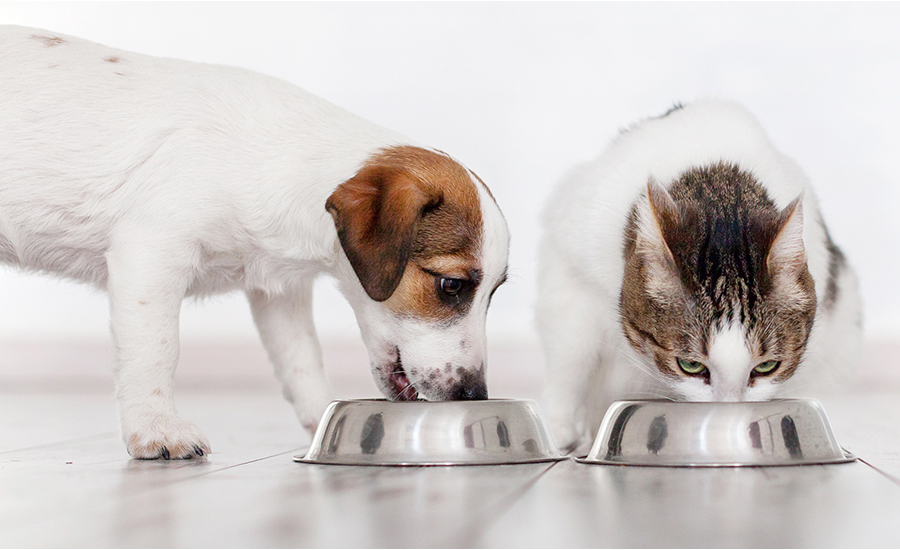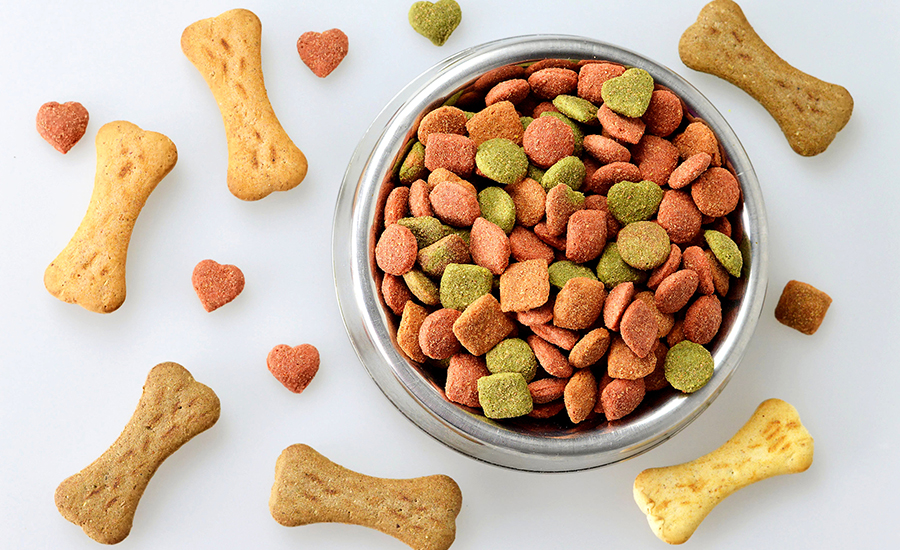Pet food ingredients: The good, the bad and the ugly
Rather than waste meat byproducts and misshapen produce, “ugly” foods are finding a home as nutrient-rich ingredients in pet food

Photo courtesy of Getty Images/jchizhe
Beauty is in the eye of the beholder. Different people have differing opinions about what they find attractive. Can the same be said about ugliness? It appears not—at least not in the food industry. If a food is deemed “ugly,” it will not see store shelves. This is why companies like Misfits Markets, Imperfect Foods, Hungry Harvest and Preserve Farms Kitchens are gaining traction. Instead of throwing away these ugly foods, these companies are finding a way to combat food waste by utilizing foods that are less than cosmetically appealing.
Ugly food is not limited to produce, either. Meat byproducts—such as the kidneys, hearts, skin and livers—do not appeal to most for human food consumption, but these “ugly” byproducts are rich in nutrients.
This is where pet food manufacturers come in. They play a key role in helping to avoid food waste by using ugly as well as upcycled food in their formulations.
“Pet food makers play an important role in helping to avoid food waste while still providing essential nutrition for our dogs and cats,” says Mary Emma Young, senior director of communications and strategic planning at The Pet Food Institute (PFI). “By using parts of the animal that humans choose not to eat, or ‘ugly’ produce that may not be sold at groceries stores or through other consumer outlets, pet food makers are helping to be part of a sustainable solution.”

Director of product innovation, F+B team, CRB

Senior director of communications and strategic planning at The Pet Food Institute (PFI)
In a report released by PFI, American Feed Industry Association and North American Renderers Association found a diverse array of more than 500 ingredients found in pet food, Young says. “This included specialty crops and produce such as peas, beet pulp or sweet potatoes. As pet food makers formulate their dog and cat food recipes and set ingredient specification with their ingredient suppliers, they provide a valuable outlet for ‘ugly’ food that may not otherwise be put to use.”
Tony Moses, director of product innovation, F+B team, CRB, adds that there are fantastic opportunities for pet food manufacturers to use ugly produce. “The ‘ugly’ moniker typically means that the produce does not meet the USDA’s highest grades for appearance, as an uncut fruit or vegetable,” he says. “Ugly does not refer to the nutritional value of the produce; it can provide the same vitamins and minerals as the highest grades. Fortunately, for pet foods, manufacturers use bite-sized ingredients, so pets can easily eat the product.”
Young says, “While there are parts of the animal that we Americans often choose not to eat, our pets find these ingredients delicious, and they are nutrient-rich. These animal byproducts are often used in dog and cat food recipes, keep pet food from competing (with) the human food chain and helps make our agricultural system more sustainable.”

Moses agrees. “Ugly food is part of the bigger movement of upcycling.” He says that if you look at the EPA’s definition for upcycling, it is about getting more value out of food that is fit for human or animal consumption that might otherwise go to waste. “So, for upcycling meat byproducts, it’s less about byproducts that are ‘ugly,’ or don’t meet standards for appearance; it’s more about using meat cuts that may not be popular to consume by humans, such as skin, livers and kidneys. Though it might seem strange based on our food preferences, these components are highly nutritious and have desirable sensory properties for pets. It’s a fantastic way to realize value from less popular types of meat,” he says.
Manufacturing, equipment, processing
With regard to manufacturing meat byproducts, Moses says to treat them in the same way that you would treat your primary products. After all, they will ultimately go into a food product that needs to be nutritious and safe for pets. “This may mean considering how the product is processed, packaged, stored and transported in order to prevent foreign material or microbial growth,” he says. It may also require adding new quality control (QC) tests, account or brand managers that can advocate for the quality and supply of those ingredients.
Moses adds that for those using the byproducts, it is important to develop a good relationship with suppliers to ensure a consistent, quality product. “Make sure they understand your standards, and you can work with their manufacturing setup. Also, make sure you understand how the byproducts originate and the reliability of that stream,” he says.

Manufacturers should constantly look for ways to optimize their production and produce as much high value product as possible. Moses says, “If the byproduct is critical to your brand, it might be worthwhile to consider long term contracts, or higher prices, to ensure consistent supply.”
When it comes to the equipment and processing of these ingredients, manufacturers should consider the materials. “Ugly foods, by definition, have wider specifications for appearance. Therefore, manufacturers should be prepared to handle incoming materials that vary in appearance from lot to lot,” Moses says. This means that procurement and QC labs may need to reconsider requirements for color, size, and shape, and manufacturers may need to have flexible formulas for their products.
For example, manufacturers might need to substitute equivalent ingredients if an ugly ingredient is not available due to growing conditions that favor a better appearance or if they lack the size or color needed to stand out as an inclusion in a formulation. “For upcycled foods, manufacturers may need to understand how their suppliers process their raw material. If it is truly a byproduct stream, determine if it is subjected to typical critical control points (CCPs) or other quality measures. If not, manufacturers might need to handle raw materials as uncooked, agricultural products. This typically requires a separate handling area from the cooked ingredients, and a validated cook or kill step.
“Strictly speaking,” Moses elaborates, “ugly foods only differ from non-ugly foods in their appearance. For this difference, the need to retrofit may be minor.” Material handling may need to be addressed for unusual shapes that may cause raw materials to be caught in belts or flow poorly, he adds. “However, manufacturers should determine if the ‘ugly’ foods are being handled differently at their supplier’s facility. For the worst case, the facility may need to be retrofitted to handle raw agricultural products. This could involve adding raw handling spaces onto the facility, methods for foreign material detection and validated cook or kill steps,” he says.
Meat byproducts are received raw, and manufacturers have rigorous quality plans in place for safe processing, along with the appropriate equipment and facility layouts to support it. “The clients we work with have been designing their facilities to process these byproducts, using the same standards as human-grade food facilities. The processing requirements for ugly foods can be easily adapted to what already exists in the industry,” Moses says.
Sustainability, challenges
As pet food makers formulate recipes for nutrition, they also have an opportunity to talk about the industry’s great sustainability, PFI’s Young notes. “One challenge they may face is that some pet owners may not understand why byproducts that are upcycled, as well as ‘ugly’ food, are being used in a recipe,” she says. “These ingredients may not meet our personal preferences when we shop or look for groceries. However, this is a moment when pet food makers can communicate to the public about how they prevent food ingredients from going to waste and add value into the agricultural supply chain, without sacrificing nutrition.”
Moses adds that consumer perception may be a significant challenge for upcycling meat byproducts. More and more, owners are purchasing pet food that reflects their values, including feeding their pets food that they would also eat. “Unfortunately, this may not include those out-of-favor meat byproducts, such as livers, hearts and skin, despite their nutritiousness for both humans and pets,” he says. This means that manufacturers and their marketing teams may need to balance the benefits of advertising upcycled meat byproducts with this trend. Moses says, “They could explore claims like ‘made with upcycled ingredients,’ and call out specific ingredients when they feel they would resonate with the owner’s values.”
“While ‘ugly’ and ‘upcycled’ foods are more recently coined terms, pet food makers have been using these ingredients for decades to help give dogs and cats the nutrition they require,” Young says. “As an industry, there’s a recognition that we all must meet future sustainability needs, and companies across the sector are involved in projects to further minimize our footprint. Some ways that companies may do this is through setting ingredient sourcing goals, working toward carbon neutral manufacturing or reducing water use,” she concludes.
Looking for a reprint of this article?
From high-res PDFs to custom plaques, order your copy today!







